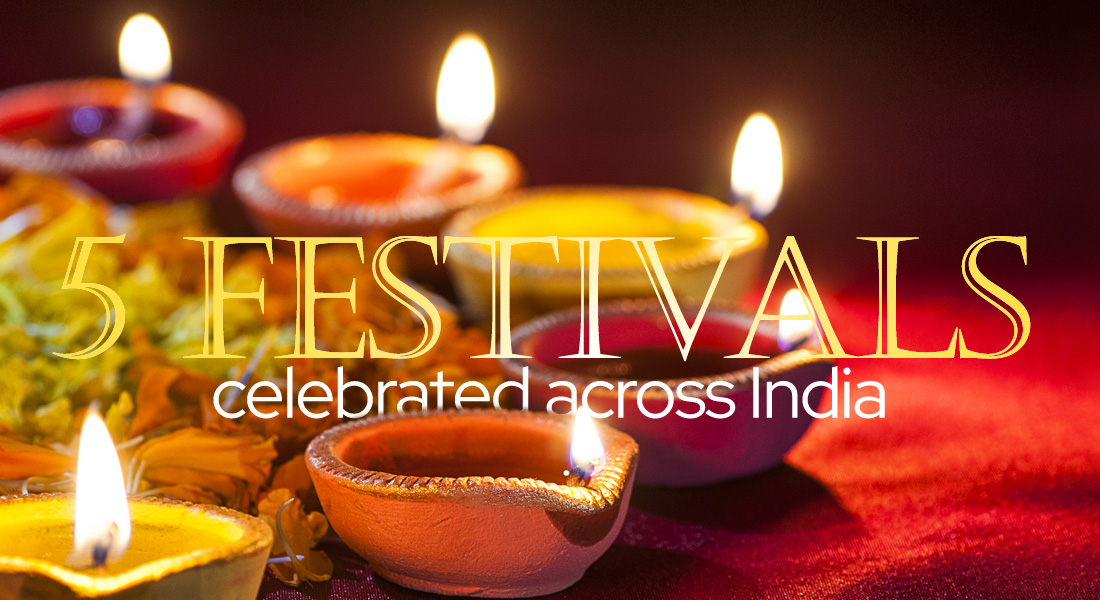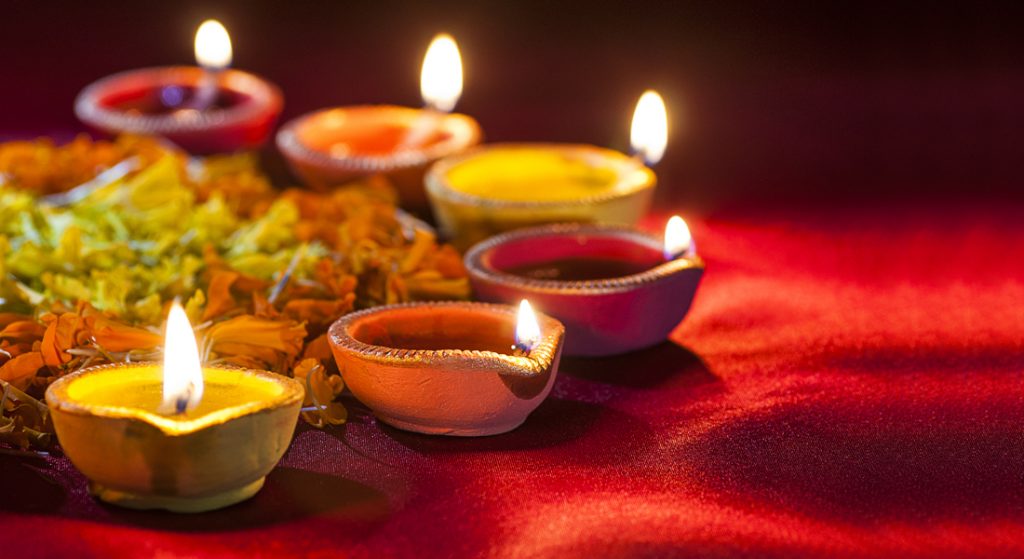
5 Festivals celebrated across India
India’s cultural and religious richness is reflected in its festivals. These festivals are a melange of glorious heritage, celebrated myths and historical events, culinary tradition and family bonding. They form the bedrock of values and foster the growth of social capital.
We give you a glimpse of 5 festivals celebrated across India that is sure to make you want to experience them for yourself.
Dasara: This festival is celebrated across India to celebrate the hard fought victory of good over evil. The festival is preceded by Navaratri, a nine day long ritual dedicated usually to the nine forms of Goddess Durga named Navadurgas. Goddess Durga’s victory over demon Mahishasura is celebrated on the tenth day known as ‘Vijayadashami’. In some parts of the country, the tenth day is celebrated as the day when Bhagawan Shriram felled demon king Ravana. A huge cut out of Ravana is set on fire through an arrow of fire to celebrate the victory. Ramlila (the life of Bhagawan Shriram through songs) is held on nine days culminating with the Ravana effigy burning on Vijayadashami. Families across India get together and celebrate the ancient festival with fervour and joy. A happy occasion to prepare the best cuisine and celebrate. Twenty days after Dasara, Deepavali is celebrated. After felling Ravana, Bhagawan Shriram proceeds to Ayodhya and his welcome is the festival of lights.

Deepavali: The most important and widely celebrated festival of India is Deepavali. Popularly known as the Festival of Lights, it is the occasion for families to get together and celebrate the return of Bhagawan Ram to Ayodhya along with his wife Seetha and his brother Lakshmana after defeating the demon king Ravana. The festival spreads the message of victory of good over evil and light over darkness. Lamps are lit in all households to celebrate the victory over darkness. The festival is celebrated for 3 days with elaborate poojas and rituals performed to detail. It is the one time of the year when various firecrackers are burst, and a true victory of light is celebrated with gusto. It is an occasion to buy new clothes for all the members of the family. The distribution of sweets to friends, relatives and associates symbolises the joy of the sweet victory of goodness and righteousness.

Holi: It is a colourful festival celebrated in most parts of India. This ancient and one of the important festivals of the country is also known as the Festival of Colours as people spray various colours on each other. Usually celebrated to welcome the spring at the end of winter season, it is the festival most people look forward to as it offers a great opportunity to enjoy with much fanfare. In ancient temples of our great land, holi celebrations are immortalised in the form of carvings along with Deepavali and Dasara indicating the ancient value and timeline of these festivals. On the previous evening of the festival, a fire is lit in the form of a bonfire to celebrate the killing by the fire of Holika, the demon sister of demon king Hiranyakashipu. And the festival day is the celebration of the occasion when Bhagawan Vishnu takes the form of Narasimha to decimate Hiranyakashipu. Spraying colours to celebrate the onset of a new season, a new dawn, and a new beginning is the unifying factor of Holi.

Sankranti: It is the only ancient Indian festival that is celebrated on a fixed day every year, i.e. the 14th of January. It marks the day when the sun moves from the southern hemisphere to the northern hemisphere, or from Dakshinayana to Uttarayana. This is an auspicious day in the Hindu calendar, and even in ancient times, this day was celebrated as a day of new beginnings. Many stone inscriptions have mentioned the importance of this day since ancient times. Celebrated all over the country with different names and styles, happy occasions like marriages and other functions are planned during this time. A sun bath taken on this day in the sea or the river is considered auspicious. The largest congregation of devotees in a single place at a given time, the Kumbh Mela is held on this very day once in 12 years. The Magh Mela and Ardh Kumbh Mela are also held on Sankranti.

Krishna Janmashtami: The day of the birth of Bhagawan Shri Krishna is celebrated in many parts of the country with great enthusiasm and passion. Bhagawan Shrikrishna’s birth was as dramatic as the festivities are. The temples at Mathura and Vrindavan, the holy cities associated with Shrikrishna’s life, are the centres of attraction during Janmashtami. Various region-specific folk sports competitions centering around curd, the main food of juvenile Shri Krishna, are organised with much fanfare and active participation from devotees.



